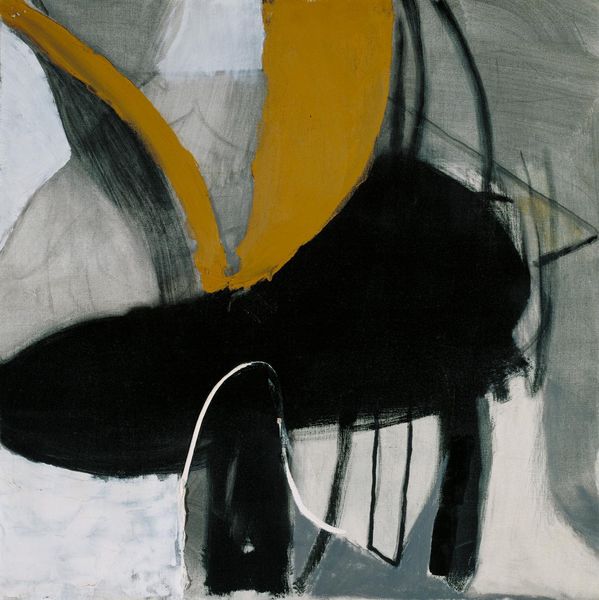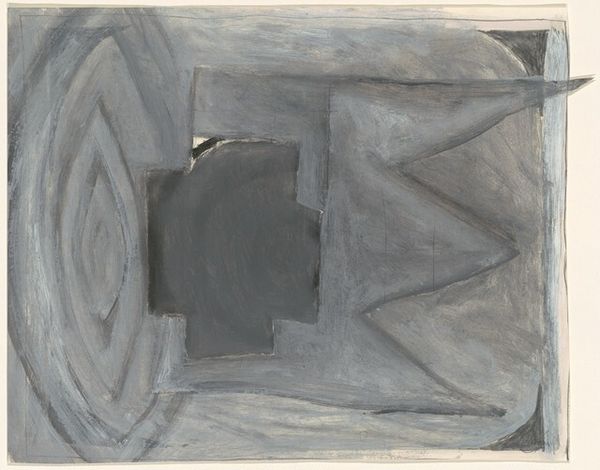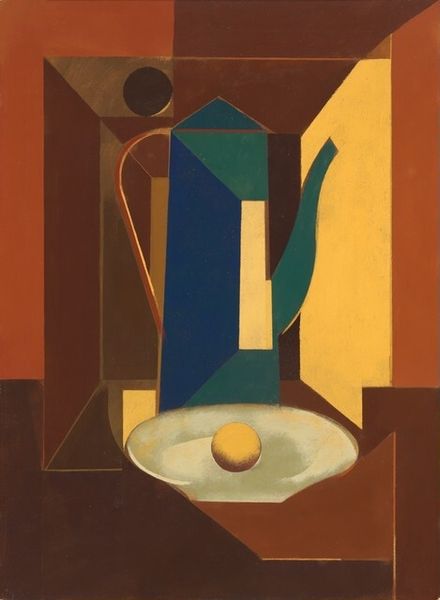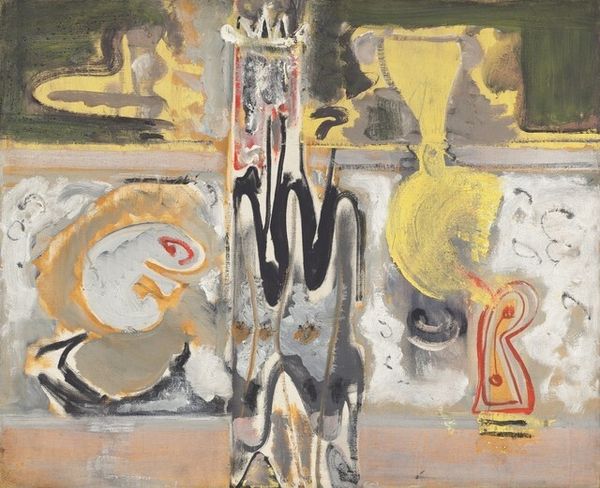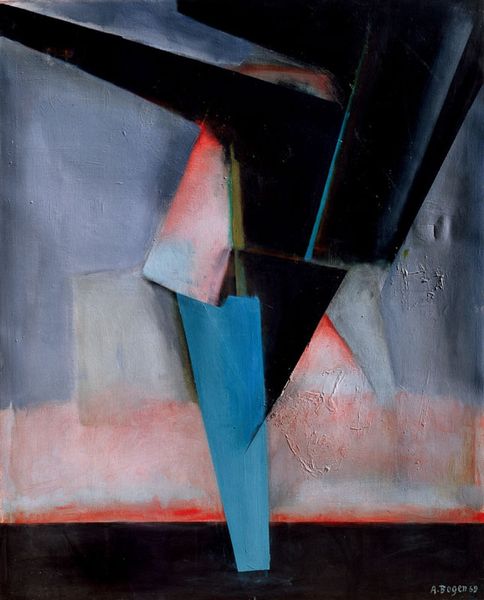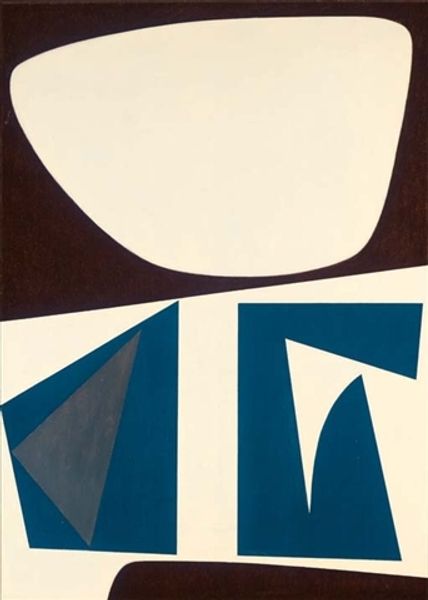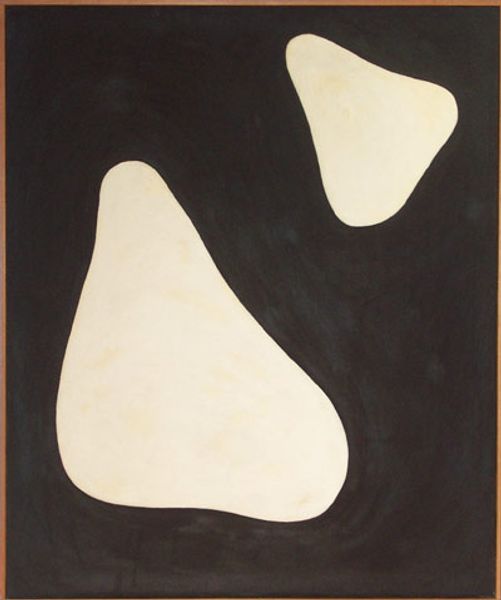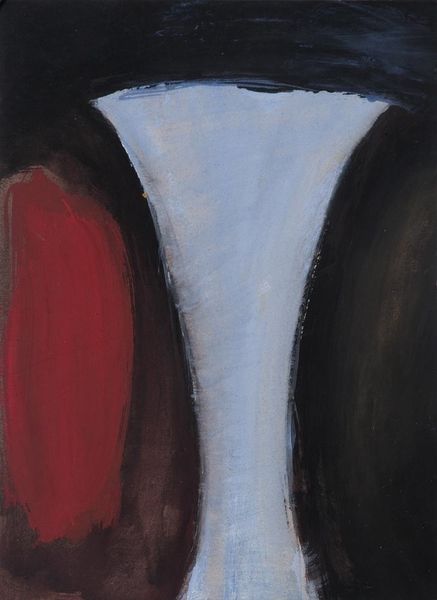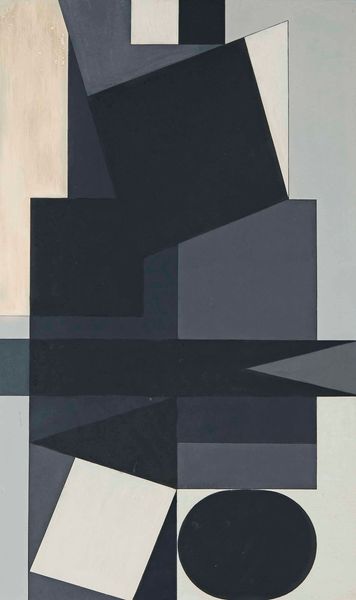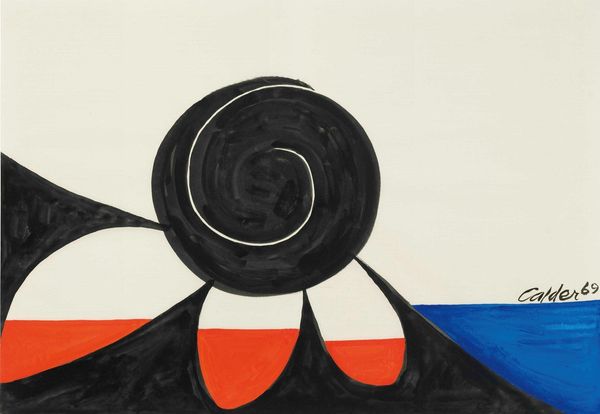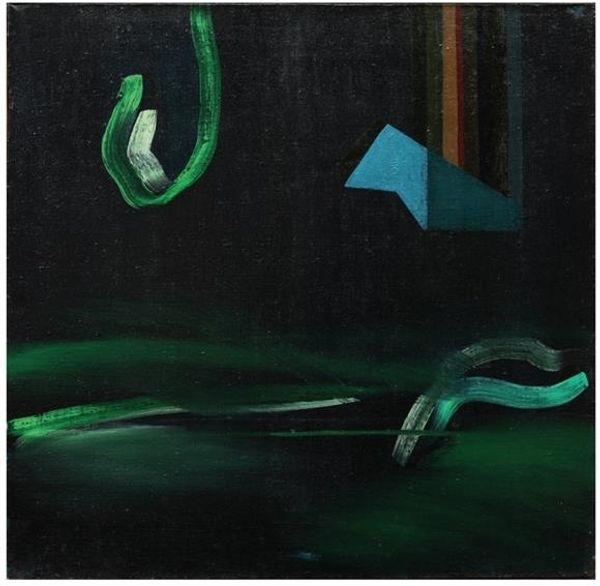
painting, oil-paint
#
painting
#
oil-paint
#
figuration
#
oil painting
#
modernism
#
realism
Copyright: John Brack,Fair Use
Curator: Editor: Here we have John Brack's "The Fish Shop" from 1955, an oil painting that features a solitary, rather austere fish head mounted like a trophy. I find its stillness quite haunting. What do you see in this piece? Curator: Beyond its stillness, consider the societal undercurrents. Brack often critiques the alienation and consumerism prevalent in postwar Australia. How might this depiction of a fish, severed and displayed, speak to that? Think about the commodification of nature, the objectification inherent in consumer culture. Editor: It definitely removes the fish from its natural environment, turning it into a kind of product or symbol. Is Brack suggesting something about the way we interact with nature, even in the '50s? Curator: Precisely! And consider the sharp, almost brutal lines of the fish's head, the clinical presentation. Doesn't that echo a kind of dehumanization that was present in the wake of the Second World War? The flattening of experience, turning life into something stark and lifeless. Editor: That makes me think about the period's anxieties around industrialization, too. Could it also speak to how individuals felt like commodities within an increasingly mechanized society? Curator: Absolutely! Brack isn't just painting a fish; he’s reflecting anxieties about identity and agency within a rapidly changing world. Are we reduced to mere objects in a system? And who benefits from this perceived objectivity? Editor: So, seeing the fish as a representation of broader social and political anxieties makes this much more powerful than just a still life. Curator: Indeed. It's an invitation to question the narratives we tell ourselves about progress and prosperity and what might be lost in the pursuit of these values. It certainly gives one pause to consider! Editor: Absolutely, thank you.
Comments
No comments
Be the first to comment and join the conversation on the ultimate creative platform.
